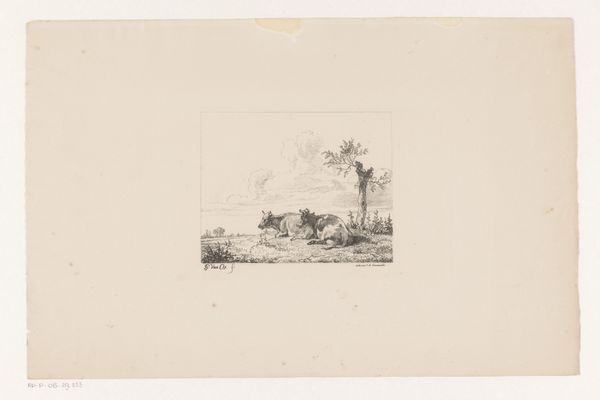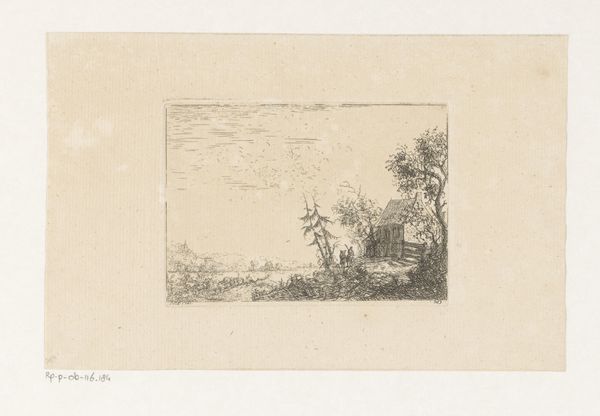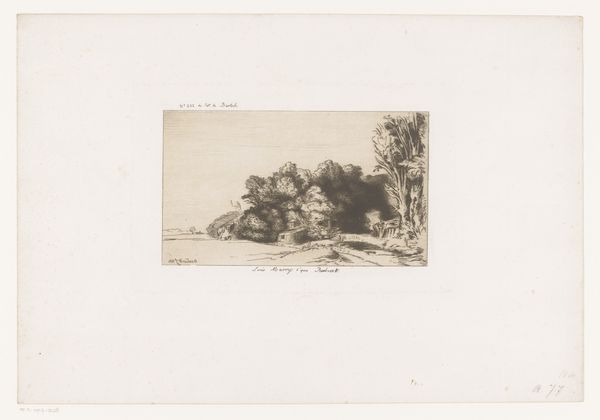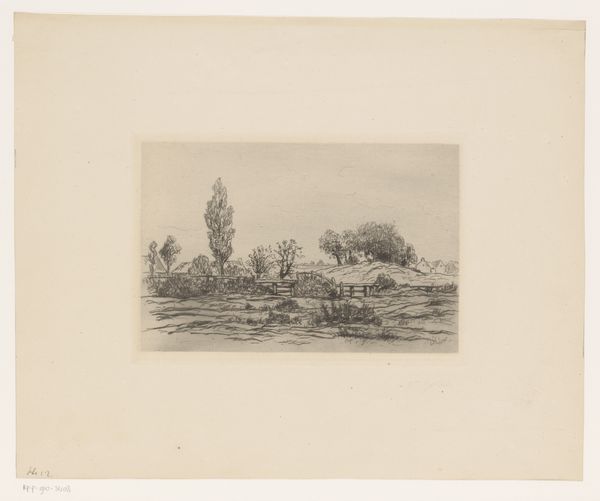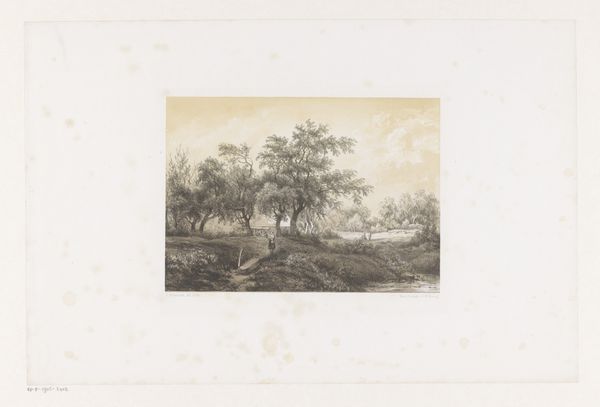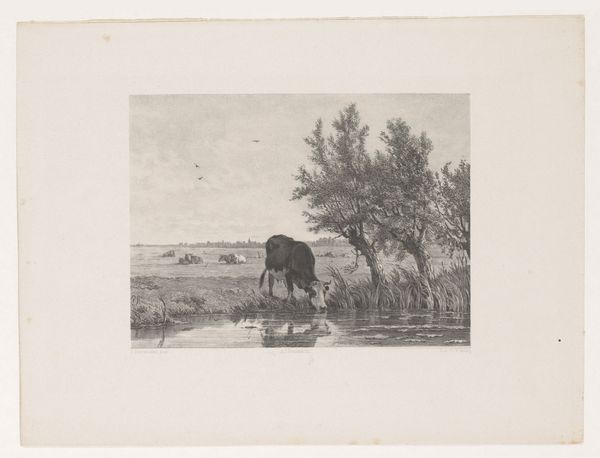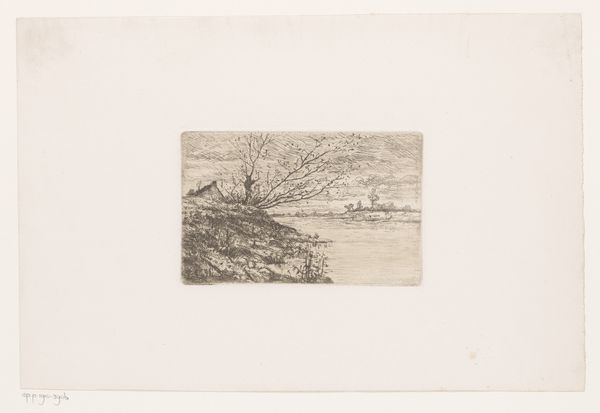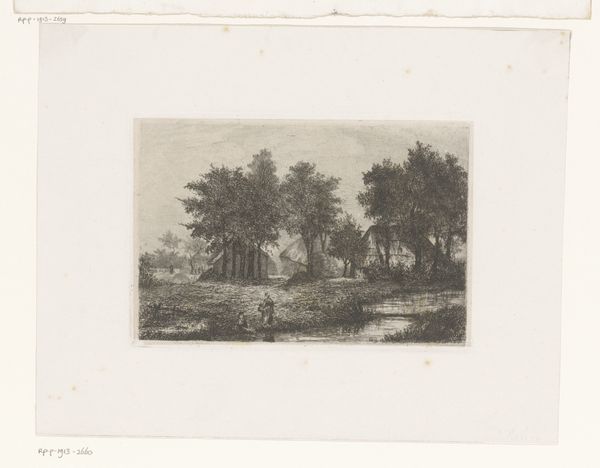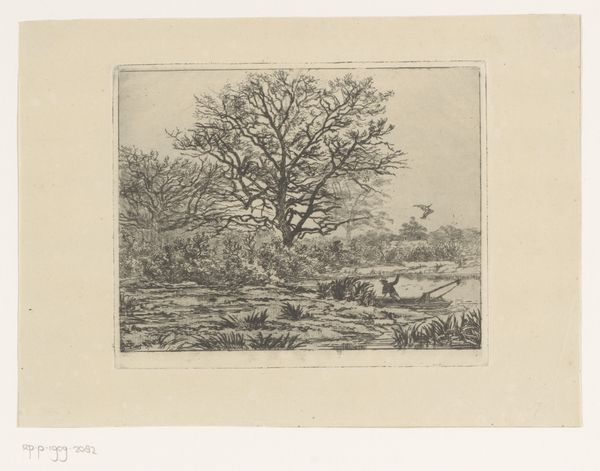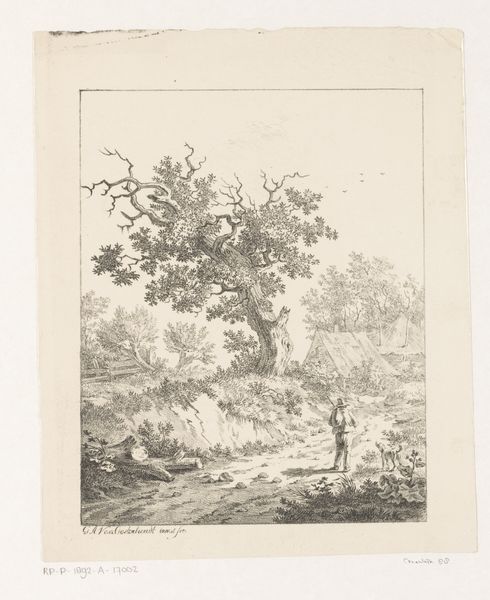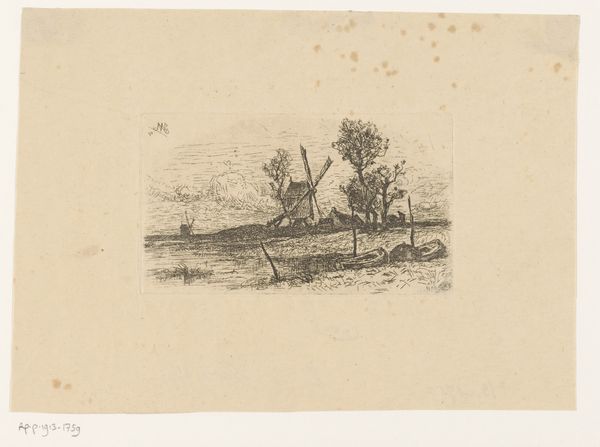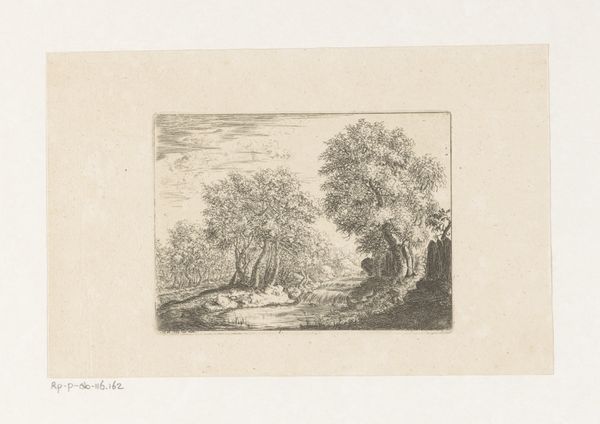
print, etching
# print
#
etching
#
old engraving style
#
landscape
#
etching
#
realism
Dimensions: height 122 mm, width 170 mm
Copyright: Rijks Museum: Open Domain
Editor: We're looking at Charles Jacque's "Landscape with Figure in the Water near a Rowing Boat" from 1846, made with etching. The detail is impressive. What immediately strikes me is how seemingly mundane a scene is made so compelling through the etching technique. How do you read this work? Curator: Consider how the etching medium itself democratized image production in the 19th century. Here we see landscape, but not just any landscape – one intimately connected to labor, notice the figure wading, the suggestion of a boat, presumably for fishing or transport. Jacque isn't just presenting nature; he's showing us its entanglement with the lives and work of ordinary people. Editor: So it’s not simply romanticizing rural life? Curator: Precisely. We must consider who had access to these images. Prints circulated widely, even among those who could not afford paintings. Etchings like these became part of a broader visual culture. What impact might it have when everyday citizens see artworks that include representations of work that resembles their own experience? Also, I think the roughness inherent to the etching process itself speaks to labor. What do you think about that aspect? Editor: I hadn’t considered that, the 'roughness'. It seems at odds with some academic landscapes that were prevalent at the time. Curator: It disrupts the hierarchy. This artwork allows us to consider how images are manufactured, distributed, and consumed within a society. Labor, materiality, consumption - all key to a materialist view. Editor: This has given me a totally new way to consider the work, moving beyond just its aesthetic appeal. The means of production definitely changes my viewpoint. Curator: Indeed! The method isn't secondary; it's intrinsic to understanding the image's meaning.
Comments
No comments
Be the first to comment and join the conversation on the ultimate creative platform.
